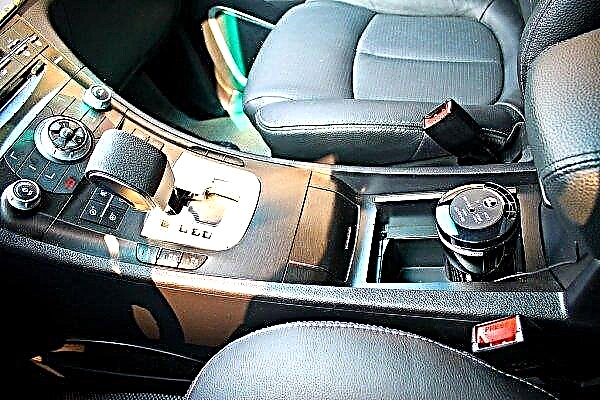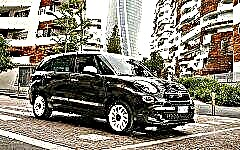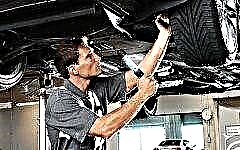
Here it is, your dream car! To keep your dream from turning into a nightmare, you need to deal with the maintenance costs. In addition to the net purchase cost, the ongoing maintenance costs of the vehicle are also important. A comparison is relevant here because fixed costs and variables can be quite different.
Don't let your car turn into a money eater and pay attention to important information about the cost of maintenance.
How costs stack up

At first glance, owning your own car is not that expensive, but you will constantly face significant additional costs. You need to take this into account and weigh whether you want to finance them and whether you can in the long run. When planning your budget, you should ask the following questions:
- How high are the acquisition costs?
- How high are fuel costs?
- How much does auto insurance cost?
- How much will road tax cost?
- What are the daily maintenance costs?
- How quickly does the residual value of a given model decline?
Of the most important, it is worth considering that:
- vehicle maintenance costs are comprised of purchase, insurance, taxes, depreciation, maintenance and fuel costs for the vehicle;
- the type of class, equipment, age of the car, your driving and repair skills, and access to specialists who can solve your problems for a reasonable fee are essential;
- the region of your residence, which determines the cost of services and spare parts, as well as the conditions in which the car will operate, the intensity of road traffic and the risk of an accident, also plays a role;
- the more prestigious, luxurious, exotic, larger and more powerful the car, the higher the operating costs.
Of course, there are no general guidelines on how much a car will cost you each month. As you can see, it depends on too many factors. You can roughly count on around 200 euros for a small mid-range car and double that for something more elite.
Fixed costs are easy to calculate, but there are guidelines for variable operating costs that can be used as a guideline.
Fixed costs

In addition to a one-time purchase, there are fixed costs for car maintenance, which you can calculate with more or less accuracy.
Depreciation
The car depreciates every day. Typically, a 10-15% decrease in cost per year is expected - less for old cars and significantly more for new ones. The wear on the new car is enormous. In the first year, its cost falls by about 25 percent, over the next 3 years it loses to half of the original price, then the drop stabilizes at the level of 5-7%.
Depreciation depends on various factors such as the type of vehicle, the reputation of the manufacturer, the condition versus the age of the vehicle, the number of kilometers traveled, and marketability. With good care, you can positively counteract the loss of value.
Leasing / loan costs
If your car is leased or bought on credit, you pay a monthly rate.
Transport tax
You will have to pay an annual car tax. It varies depending on the region, power, weight and other factors that should be found out before purchasing a vehicle. The government uses these proceeds to improve infrastructure and protect the environment. The amount depends on the type and volume of the engine, emissions of pollutants, the date of first registration, etc. The less your car pollutes the environment, the lower your road tax will be.
Toll highways
If you intend to use motorway tolls, you need a “travel card”. You will also have to pay for it.
Parking
Your car will need a parking space. At home and at work. And that also comes at a cost.
Care
Wash, vacuum, change oil, top up wiper and brake fluid - your car needs regular maintenance. You must be prepared to spend on this.
Registration and insurance
This item is mandatory for every car owner. Enter the cost of vehicle registration and license plates into the consumable. Insurance is also required when it comes to motor vehicle liability. You will be introduced to additional, optional options in any car dealership (find out about discounts given, for example, for long-term trouble-free driving and no complaints).
The cost can be calculated on the Internet (we are not able to give an exact figure due to many factors affecting the subject, but there are many online services with corresponding calculators).
You can choose partial or full insurance: the latter makes sense for all new cars, especially those on credit. With the right insurance, you can save a lot in the event of damage to your car.
Variable (operating) costs

Apart from the fixed costs, there are also variable costs for car maintenance, which mainly depend on how, where and how much you drive.
A new car is generally more expensive than a used car and has much higher depreciation. On the other hand, a used one has higher fuel consumption and CO emissions, repair risks and insurance premiums. Even with the manufacturer's warranties, they are not as cheap as they might seem.
Fuel
Petrol? DT? Electricity? Costs vary greatly, but whichever type of food you choose, one rule always applies: the more and further you travel, the more you have to spend on fuel. Electric or natural gas vehicles are considered environmentally friendly. However, in terms of cost, they are not always a cheap alternative. Despite the environmental bonus, electric vehicles often cost twice as much as gasoline or diesel. But maintenance costs are less:
- electricity is cheaper than conventional fuel;
- vehicles registered between 2016 and 2020 are exempt from vehicle tax for 10 years in many countries;
- some insurance companies offer discounts on electric vehicles;
- not too fast loss of value;
- operating costs are lower because there are fewer moving parts, there is no need to change oil and filters.
If you drive a lot, the extra money spent on buying an electric car will definitely pay off, but only after a few years. And keep in mind that the network of gas stations offering electric make-up is still small.
Tires and spare parts
New rubber is not cheap, and quality is really expensive. The more you drive, the faster you need a new kit. In any case, after about 30,000 km, the tires must be replaced. Do not forget about two sets - summer tires and winter ones, as well as storage space.
Over time, you will need to replace other worn parts, such as the alternator, brakes, exhaust system, or air conditioning. Electronics problems are some of the most expensive.
Maintenance and repair
Here, the amounts vary greatly. They include not only purchase prices, but also payment for the services of auto technicians. And above all, they are directly dependent on the car model.
The costs are always higher for higher quality models, because an expensive car, among other things, contains more technology, so the expensive top-class models are always the most expensive to maintain. In some cases, monthly expenses are more than 1,000 euros.By the way, experts say Toyota has the lowest percentage of engine problems and very low average repair costs. Other overseas brands that maintain a similar reputation include Honda, Hyundai, BMW and VW.
What cars are the most inexpensive

We selected several cars of different classes, which are really inexpensive to maintain, and used the data as a starting point ADAC... Service charges can be calculated on many sites on the Internet, but ADAC is a reliable source.
This car club, the largest in Europe, compiles a list of the lowest cost models every year. Calculations assume an annual mileage of 15,000 km; the bill includes potential costs for fuel and oil refueling, replacement of tires and other wear parts, technical inspections, liability insurance and current tax on transport.
Among other things, we took into account the opinions of Russian motorists, independent appraisers and vehicle service personnel. The cost of some items on the list may vary, but by consulting a car service and talking with local car enthusiasts, you will get a rough idea of the scale of future expenses.
Most Russian cars are reliable and durable. Their main strengths include simplicity, affordable price and ability to withstand harsh road conditions.
However, quality problems often negate all the advantages (although recent samples are not so bad, at least for their "working" level - LADA Vesta, Largus, X-Ray, etc.).
In terms of quality, they receive 3-4 points out of 10 in comparison with the products of American (5 out of 10), Korean (6), French (8), Japanese (9) and German (10) manufacturers. But in service, the same Lada are extremely inexpensive, and therefore rightfully occupies a leading position in our list of winners. Other urban cars that typically consume less than US $ 2,000 per year, adjusted for long-term ownership:
- Toyota Prius, Yaris, Aygo, Corolla and Camry.
- Renault (Dacia) Logan and Sandero.
- Citroen C1.
- Hyundai Solaris.
- Volkswagen Polo and Up.
- Nissan Almera, X-Trail and Qashqai.
- Opel Astra.
- Kia Rio, Soul and Optima.
- Daewoo Nexia.
- Skoda Rapid and Kodiaq.
- Honda Jazz.
- Chevrolet Spark and Aveo.
Conclusion
There are many benefits to owning a car, but it also comes with regular expenses. When it comes to non-collectible items, there is much more to consider than just the purchase price. It is necessary to determine in advance how cheap or expensive the car will be in operation, so that later there will be no unpleasant surprises.

|| list |
- How costs stack up
- Fixed costs
- Depreciation
- Leasing / loan costs
- Transport tax
- Toll highways
- Parking
- Care
- Registration and insurance
- Variable (operating) costs
- Fuel
- Tires and spare parts
- Maintenance and repair
- What cars are the most inexpensive











